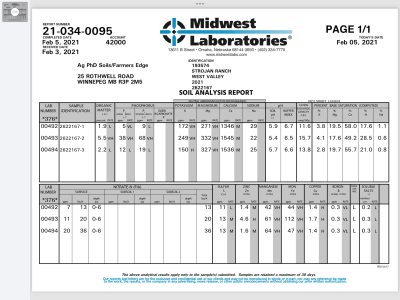Sounds fine and dandy , but in most cases it's not financially feasible to add the trace minerals to the soil. The uptake in many areas doesn't happen because of bioavailability .In most cases, if the cattle are deficient in a mineral that means that the plants aren't getting the minerals they need from the soil. Give the plants what they need and they will grow more better quality feed.
It is something that is not that easy to see but it makes a difference.
Big thing most forget is that you can have all of the mineral in either the soil. Or in a mineral mix that you want but if it isn't in a bioavailabile form you just as well light your money on fire and feed the ashes to the cows or spread the ashes on the soil for the plants to use.
You will be accomplishing the exact same thing . Outflow of money without a single benefit.

